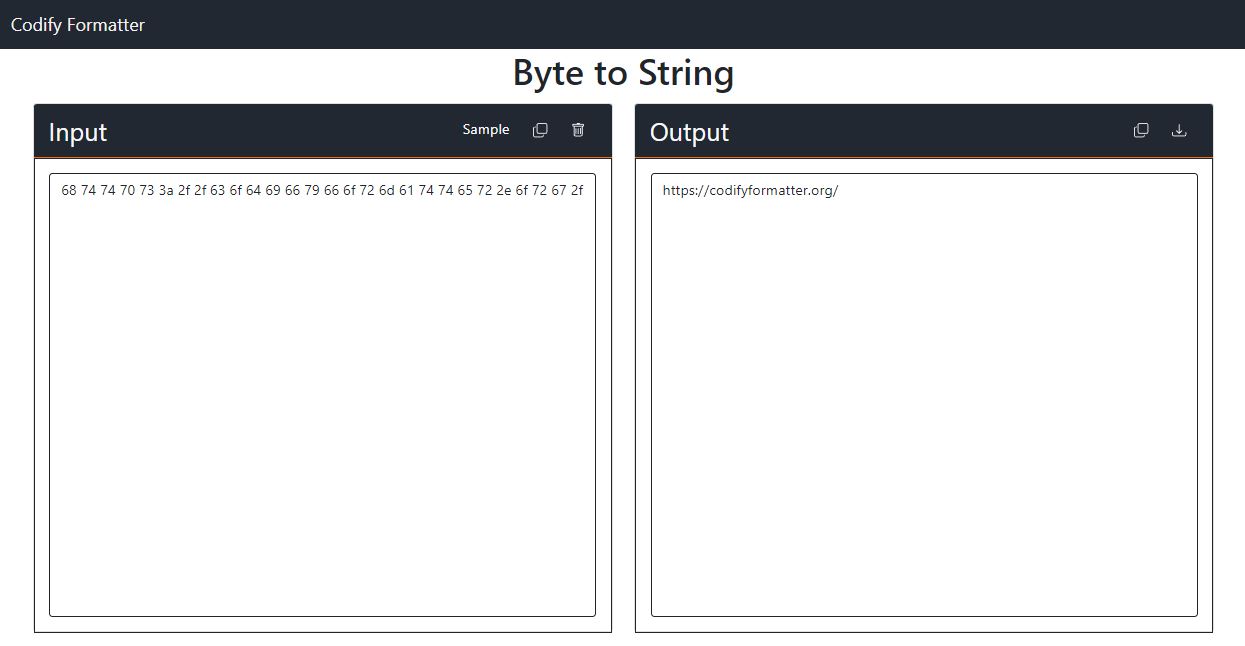
convert hex byte array to string java
Converting Hex Byte Arrays to Strings in Java
Ever felt lost in a sea of numbers, struggling to understand the hidden messages within byte arrays? This article is your lifeguard, guiding you through the process of converting a hex byte array to a string in Java, with simple and understandable explanations.
Understanding the Basics

Source: powershellfaqs.com
Before we dive into the code, let's understand the crucial elements.
- Hex byte arrays: Imagine these arrays as secret codes using hexadecimal numbers (base 16) to represent data, rather than typical base-10 numbers.
- Strings: Think of strings as the easily-readable text we use daily. "Hello World," for instance, is a string. These aren't numbers, they are the readable version of data.
- Java: The powerful programming language that makes all this happen, like a handy tool.
Why would you want to convert between these two types? (Data needs to sometimes be converted so we can easily view it or make modifications). You often need to represent data in a way that humans can comprehend easily. Or for example: When we download images from the internet they first exist in the machine's computer memory as hex byte arrays; once downloaded you need this conversion to represent data in user-friendly format! You probably work with images more often that you think!
Source: codifyformatter.org
Why Convert? Use Cases
Imagine having a large amount of data that needs analysis. You can read and understand that data better once converted to a string. (Strings let us comprehend easily what is stored as binary.)
Converting Hex Byte Arrays to Strings helps with several things:
- Data analysis: Examining raw data stored in hex.
- User input: Displaying raw data in readable forms.
- Communication: Sending data through various networks or formats more easily, converting it to a comprehensible form for various parties to receive.
- Debugging: Looking into binary codes of any format, making analysis easy!
(Think about your phone and various applications, how would your data exist if there was no way to translate it into usable forms? Think it! You see now what I'm meaning!).

Source: crunchify.com
How to Convert in Java (Steps and Explanation)
Here are some crucial steps and their logic:
-
First: Obtain the byte array, you will have a byte array that need conversion! (Example byte[] bytes= {0x00, 0x00, 0x00,…})!
-
Second: Utilize Java's built-in method or a library: The library to convert our array helps! (You might not need that sometimes): Use this useful method
String.format ("%02X", ). Or you can write this helper method as it helps converting! -
Helper method to convert:
import java.util.Arrays;
import java.nio.charset.StandardCharsets;
public class HexConverter {
public static String bytesToHex(byte[] bytes) {
StringBuilder result = new StringBuilder();
for (byte b : bytes) {
result.append(String.format("%02X", b)); // Appends in the format '%02x' which always provide two hex digits, padding the left by zero when necessary!
result.append("-"); // Use dashes between hex value to prevent reading as single long string, this way looks organized
}
return result.toString();
}
public static String hexToASCII(String hex) {
// Handle edge cases with invalid hex input:
if (!hex.matches("[0-9A-Fa-f]*")) {
throw new IllegalArgumentException("Input string must be in valid hex format!");
}
if (hex.length() % 2 != 0) {
throw new IllegalArgumentException("Hex input is invalid (odd length). Must have an even number of hex digits.");
}
byte[] bytes = new byte[hex.length() / 2];
for (int i = 0; i < hex.length(); i += 2) {
bytes[i/2] = (byte)Integer.parseInt(hex.substring(i, i + 2), 16);
}
try {
String ascii = new String(bytes, StandardCharsets.US_ASCII);
return ascii;
}catch(Exception e){
System.out.println("Some issues: " + e);
throw new IllegalArgumentException("Conversion failed for provided hex format. Please correct it!");
}
}
}
Explanation:
(We use a for loop to go through our array): The code iterates through each byte, formatting it with String.format("%02X", b) (important!). This ensures each byte (the two digits), is formatted in hexadecimal with two characters, in example 00 ,01, AF ,FF and add a hyphen for readability
- Third: Construct a new string, storing data inside! We use the previously written helper function for this conversion! (The StringBuilder and formatted values work!)
Troubleshooting
What if something goes wrong?
-
Incorrect input: Make sure your hex byte array is formatted correctly. Every hex must follow certain formating in the input otherwise there can be incorrect outputs, so double-checking the input for mistakes could help a lot!
-
Handle potential exceptions: (Exceptions are inevitable!). Our provided example includes exception handling; make sure to check for issues within your own codes to avoid potential runtime problems! Java has useful ways of resolving those exceptions to avoid crashing your software in rare situations.
Example Usage
public static void main(String[] args) {
byte[] hexBytes = {0x48, 0x65, 0x6C, 0x6C, 0x6F};
String hexString = HexConverter.bytesToHex(hexBytes);
System.out.println("Hexadecimal representation: " + hexString); //Prints something readable with '-' in between the values
String convertedString = HexConverter.hexToASCII(hexString.replace("-", ""));// Convert from hex representation back to ascii!
System.out.println("String from the Hex data: "+ convertedString);
}
Questions to consider:
- What is the format that needs to follow during conversion of data and can be different depending upon which software?
- Could you provide different error scenarios that might lead to incorrect output?

Source: geeksforgeeks.org
Conclusion
Converting a hex byte array to a string is essential when working with various types of data! By using the tools and strategies we have covered in this article, you now have the capability of converting from various complex codes in simple steps!
(Remember, the code has some adjustments and error-checks included to cater to various hex inputs!) Happy converting!



